At the age of 14, I was alone and lying in the summer grass on a hill in Brooklyn, New York, staring upward through the leaves at the passing clouds while trying to understand why a person I loved dearly had suddenly died. Without an anchor or language to explain the passage, I was at a profound loss and searching for an answer, an explanation. I clearly remember feeling the warm energy from the ground swell up and pass through my body and like a mist, mingle into the leaves and up into the clouds in that deeply blue sky.
At that moment, I recognized that I, as a person, was another aspect of nature, joined with the wind, the air, the plants, the trees, and all life teeming around me – just another form of energy. This gift has been with me throughout my life and is what I gather in my garden and express in my art.

1985 – Mary Ahern in the Cablevision studio working with the Chameleon electronic paint system.

Painting in my studio. The white iris blooms in my garden each spring. I glaze with thin washes using a fan brush and thinned paints.
My Zig-Zag Journey
Like most of us, our life journey takes many paths. For me, my twists and turns led me to a career that blended my fine arts training with my technical background. As a single parent with two hungry sons, I found a way to keep one foot in the arts by selling computer graphics equipment into the broadcast television industry. Creating graphics and fine art using the computer as my medium enabled me to have the financial stability I needed to live the life I envisioned for myself and my family.
Learning is a lifetime passion for me. Within the classroom, I have formal degrees and certifications in fine art, horticulture, botanical illustration, logic and computer programming. To this day, I continue to take online and offline workshops in marketing, writing, and various artistic mediums and genres.
Throughout my work career, I always maintained my studio art practice since it is the root of all that I do and who I am as a human being. At the present time, I have the good fortune of continuing to work independently without needing clients, creating my artwork, showing it extensively in exhibitions, and lecturing on art.

Entrance to my woodland garden. Throughout my garden there are round things to be walked through, around and over.
I am not just an artist. I am a horticulturist on a mission to transform my surroundings. I created an artistic landscape around my home as a place to immerse myself – not simply a garden to be admired while sitting on the deck. Initially, I did not have a specific plan. Instead, I let the woodland speak to me. These woodland paths have gifted me with decades of intimate and satisfying connections with nature. I immerse myself in the changing light, the turning of the seasons, the gifts of growth, and the sadness of loss as the garden goes through its life cycles. This connection with nature has inspired my mind and my art for decades.
Creating my garden has many components, as does creating my art on canvas in my studio. The mediums change, but the design concepts are consistent. Through the creation of my garden and my paintings, I take into consideration traditional artistic issues such as focal points, perspective, repetition, rhythm, texture and scale. In designing my garden, however, which I consider a three-dimensional assemblage of objects, I also add the variables of time, season, vulnerability, happenstance and science to the creative process.
I have been designing and working in the woodland garden over the course of 30 years. It’s a place of journey and meditation. I’ve been collecting round things most of my life. They feature heavily in much of my art and garden designs.
Click here to see more of my oil paintings








 My first step towards discovering that my life’s work would be an artistic journey was buying a Jon Gnagy, Learn to Draw set and experiencing a sensation that the charcoal was an extension of my hand, my arm and my body. It was thrilling!
My first step towards discovering that my life’s work would be an artistic journey was buying a Jon Gnagy, Learn to Draw set and experiencing a sensation that the charcoal was an extension of my hand, my arm and my body. It was thrilling!




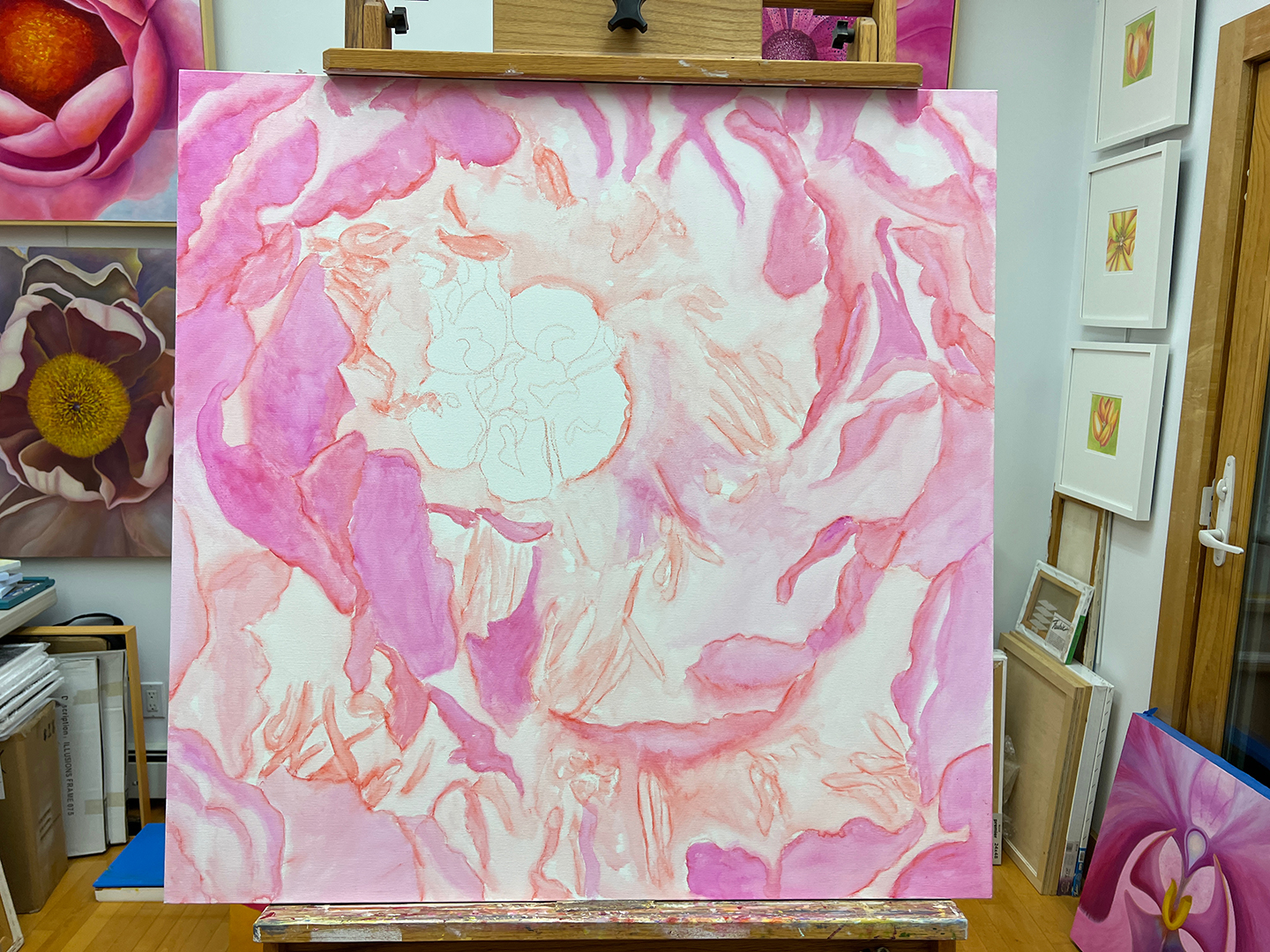
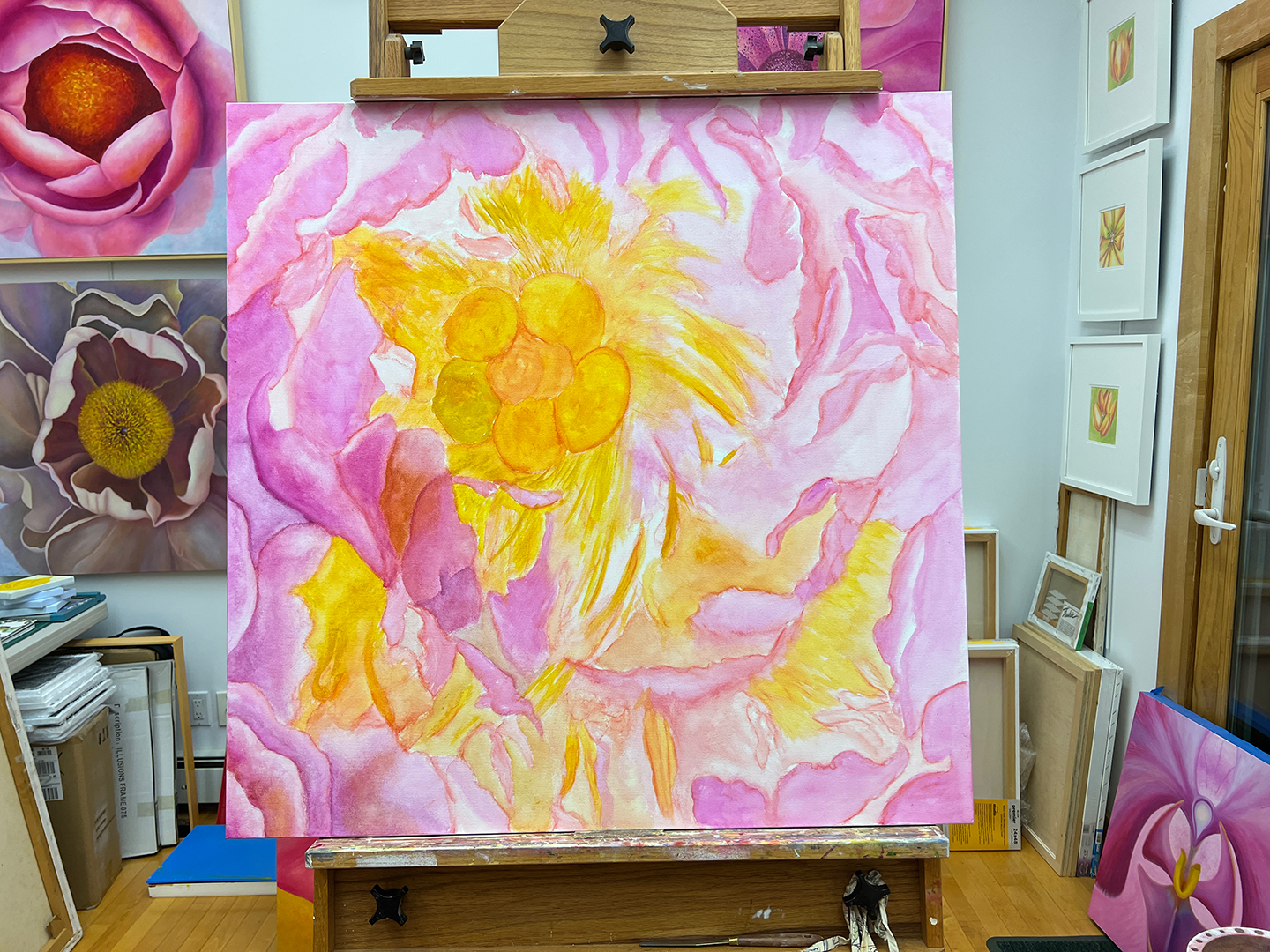
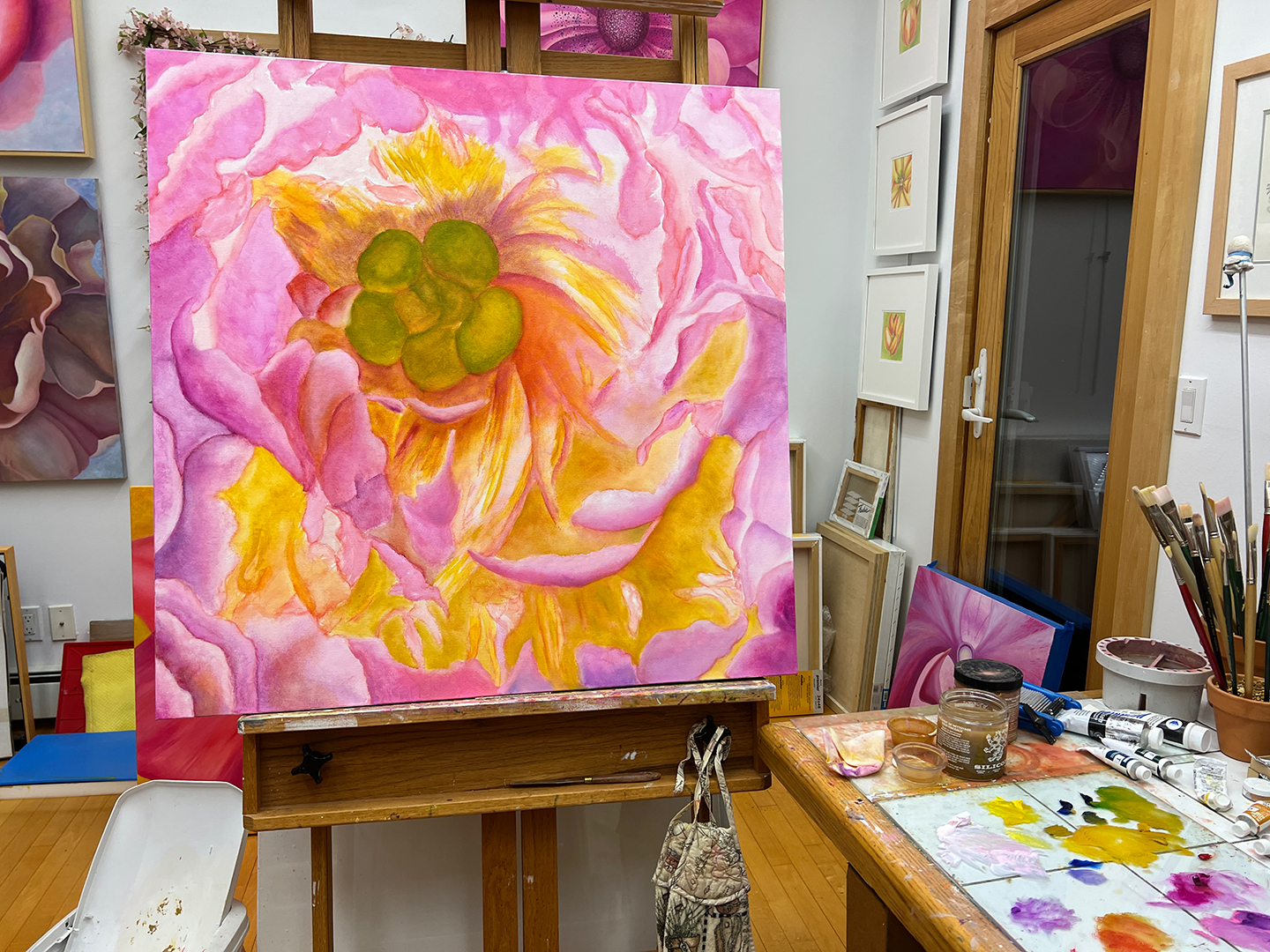
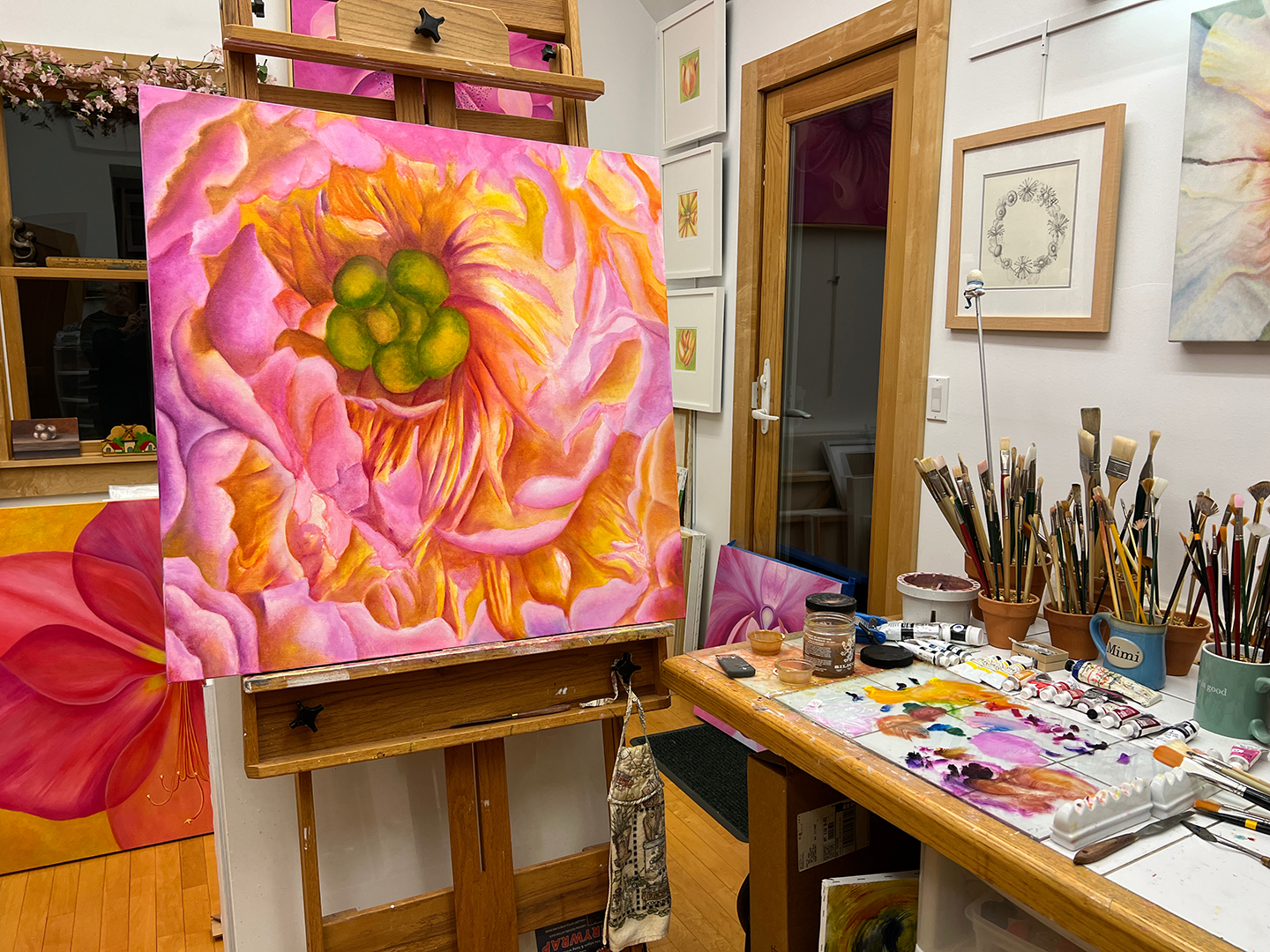
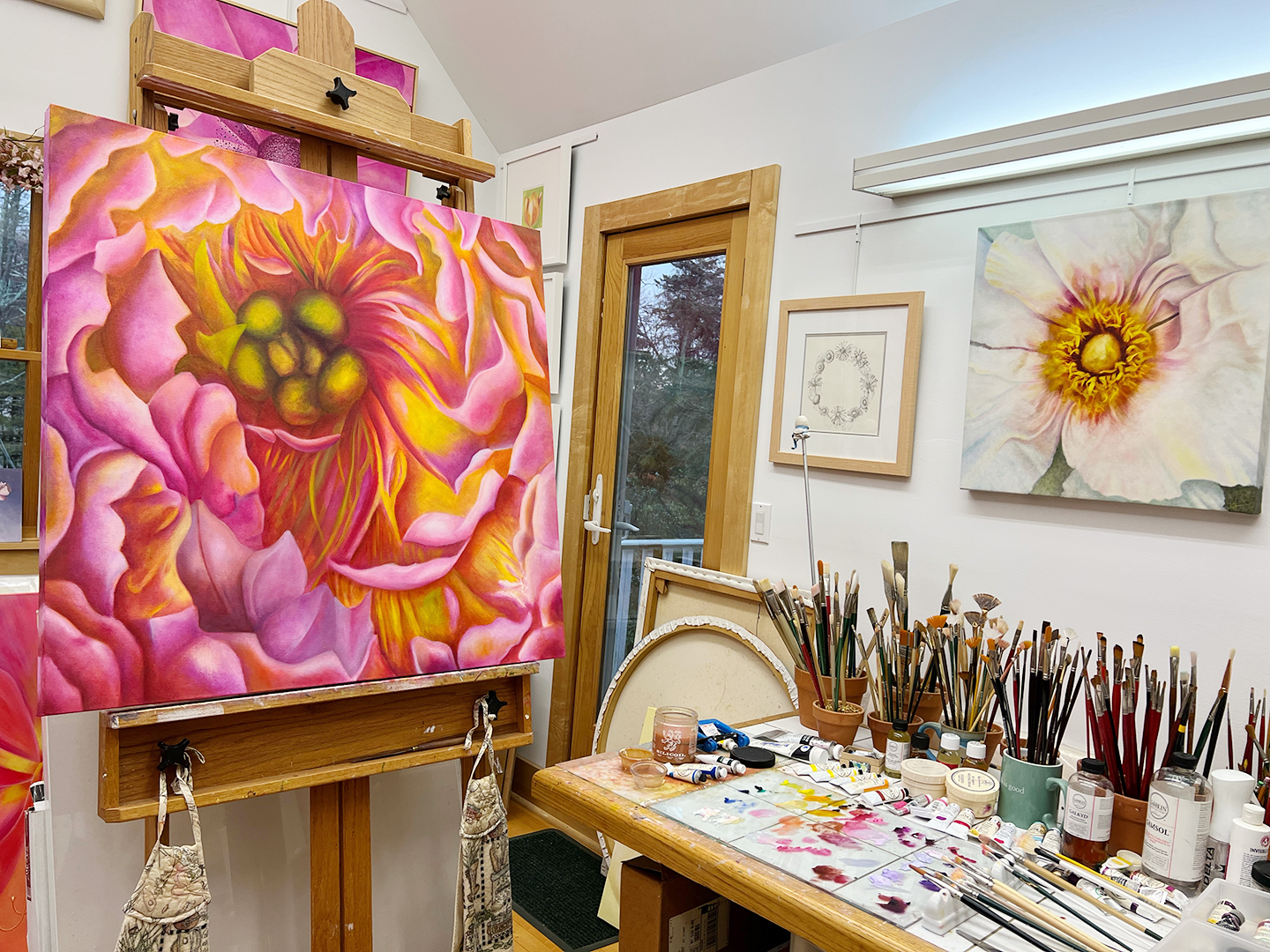
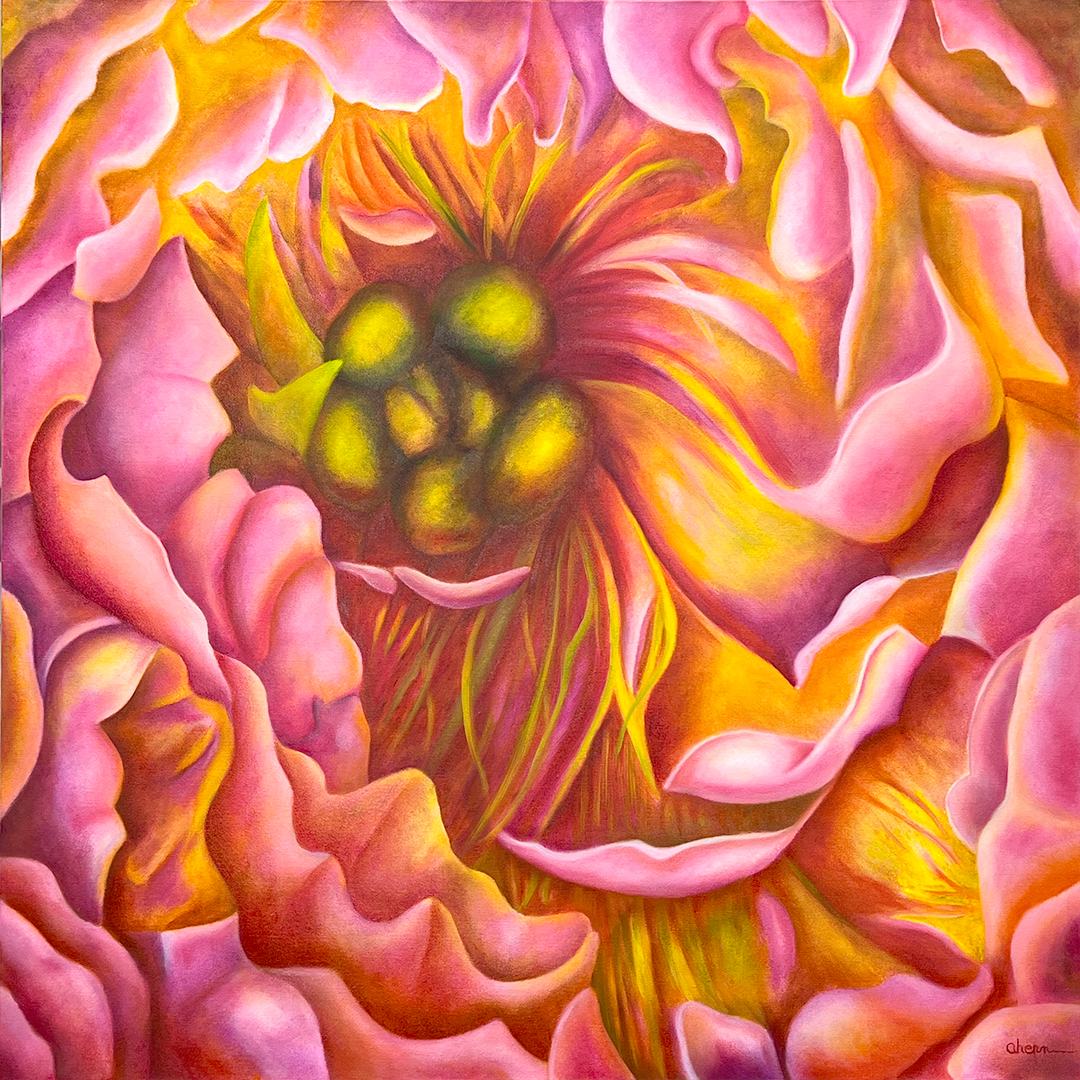
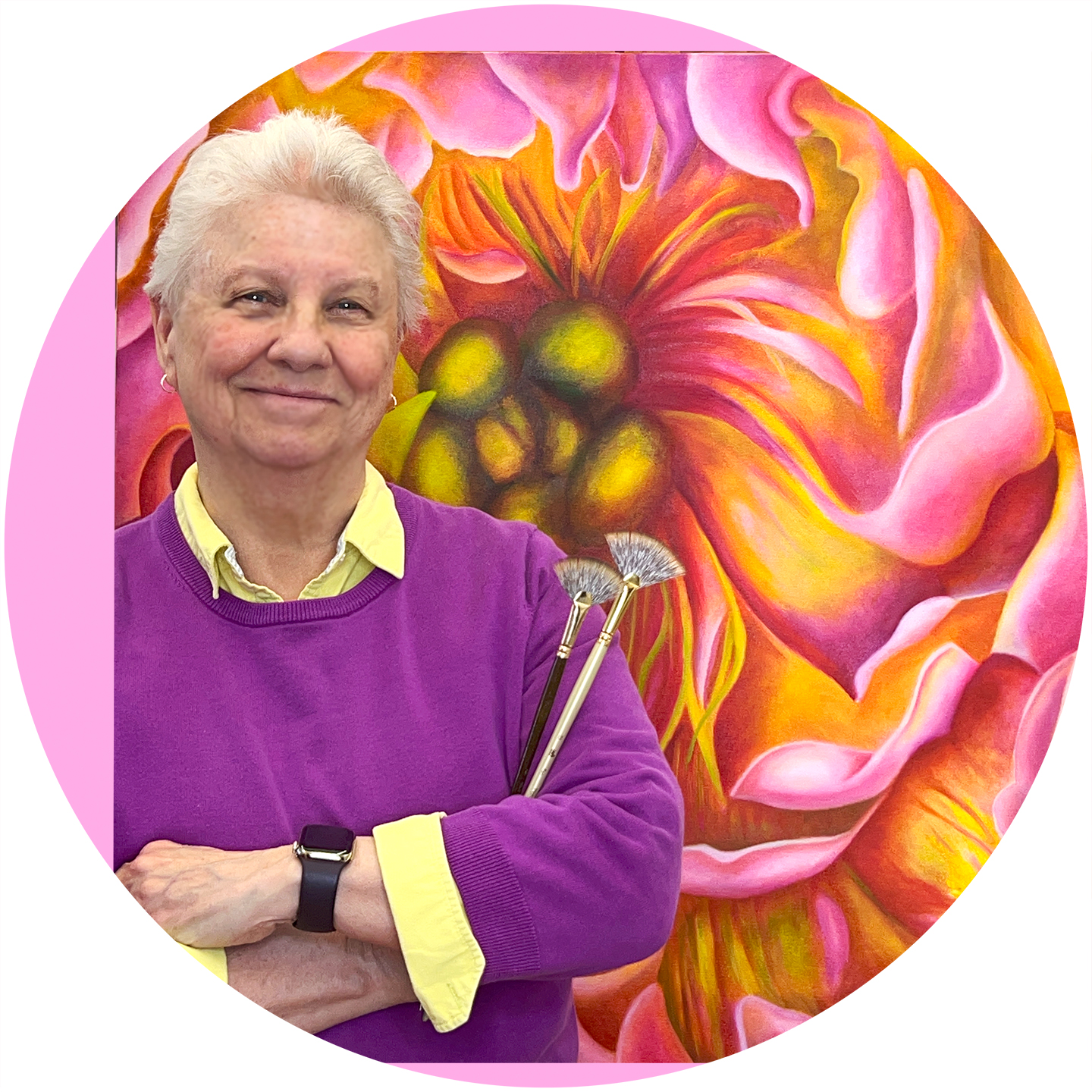






 Through the twisting paths and obstacles in life, the two constants for me have been my Art and my Garden. These are my anchors. They keep me balanced, complete, secure. The arrival of spring flings me from my studio where I’ve been creating my Art all winter, into the emerging garden surrounding my studio. The colors shout optimism to me. The joyous season has begun again. This is where I grow my subjects and gather the imagery for my work.
Through the twisting paths and obstacles in life, the two constants for me have been my Art and my Garden. These are my anchors. They keep me balanced, complete, secure. The arrival of spring flings me from my studio where I’ve been creating my Art all winter, into the emerging garden surrounding my studio. The colors shout optimism to me. The joyous season has begun again. This is where I grow my subjects and gather the imagery for my work.